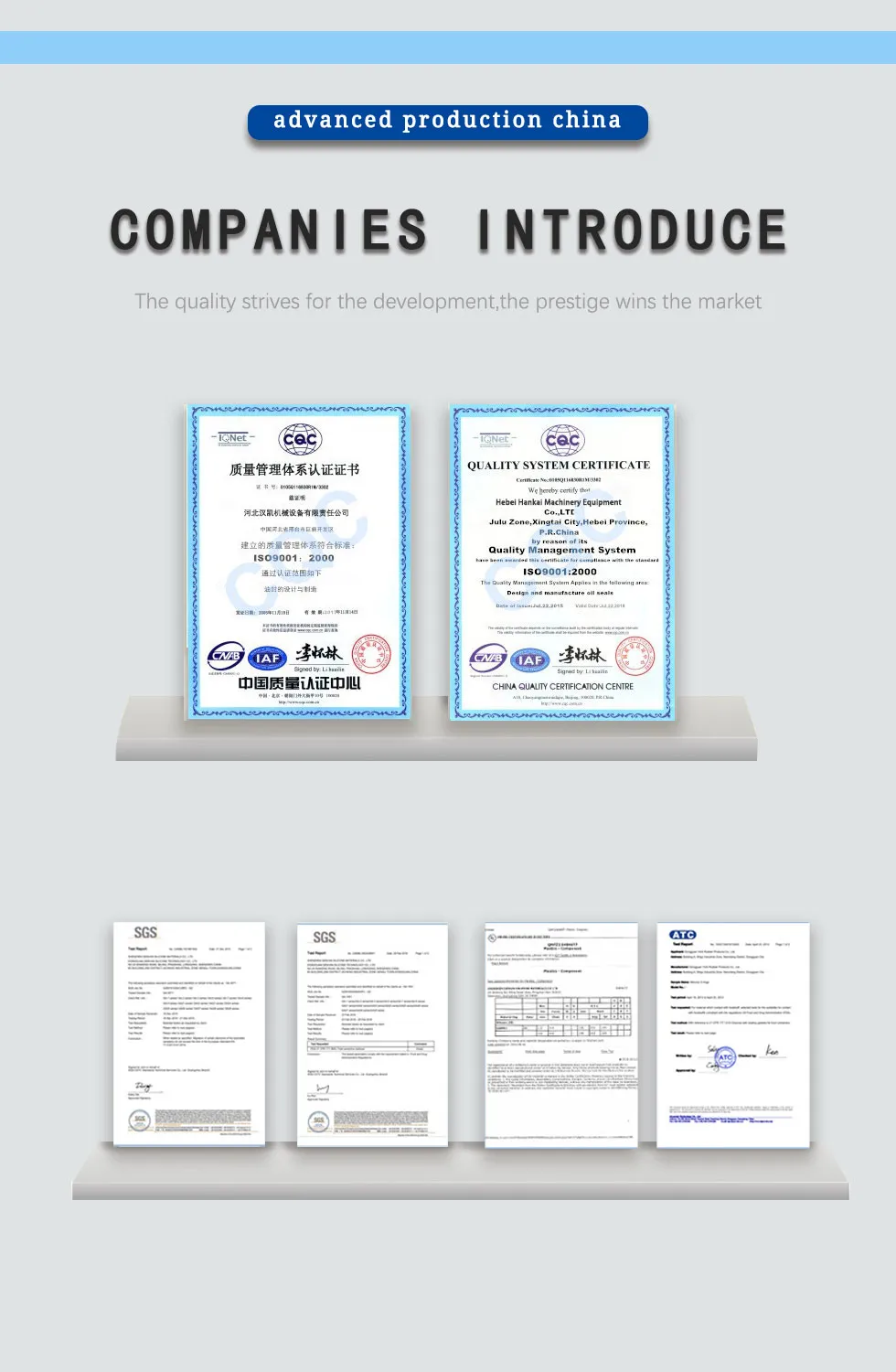Dis . 14, 2024 03:32 Back to list
Understanding the Function and Importance of Cassette Oil Seals in Machinery
Understanding the Importance of Cassette Oil Seals in Modern Machinery
In the world of machinery and automotive engineering, the role of small components can often be underestimated. Among these crucial elements, the cassette oil seal stands out as a pivotal component in ensuring the longevity and efficiency of engines and various mechanical devices. This article explores the design, function, installation, and maintenance of cassette oil seals, highlighting their importance in contemporary applications.
What is a Cassette Oil Seal?
A cassette oil seal, often referred to simply as an oil seal, is a sealing component used in engines and machinery to prevent the leakage of lubricating oil. It is designed to fit snugly around rotating shafts and cylinder heads, creating a barrier that keeps oil contained within a designated area. This is crucial not only for lubrication but also for protecting various parts from dirt, dust, and other contaminants that could impact performance.
The “cassette” designation refers to the seal's construction, which resembles a small cartridge. This design allows for easy installation and replacement. Unlike traditional oil seals that may require intricate fitting, cassette oil seals usually come pre-assembled, making them a preferred choice for many manufacturers and mechanics.
The Functionality of Cassette Oil Seals
At the core of their functionality, cassette oil seals serve several critical purposes
1. Leak Prevention The primary function of the oil seal is to prevent the escape of oil from the engine or machinery. Oil leaks can lead to a multitude of problems, including engine overheating, increased wear on moving parts, and substantial repair costs.
2. Contaminant Protection By sealing off areas from outside contaminants, oil seals help maintain the purity of the lubricant. Dirt and debris can cause rapid deterioration of oils, leading to engine wear and potential component failure.
3. Pressure Maintenance In many engines, particularly those using high-performance oils or in turbocharged systems, maintaining oil pressure is crucial. A good-quality cassette oil seal helps retain the necessary pressure, ensuring that the oil circulates efficiently throughout the engine.
4. Reduction of Friction By keeping oil contained and preventing leaks, cassette oil seals ensure that lubricating oil is available where it is most needed, thus reducing friction between moving parts. This is vital for the smooth operation of not only engines but also transmissions, gearboxes, and other machinery.
Installation of Cassette Oil Seals
cassette oil seal

Installing a cassette oil seal requires precision and care. Here are the steps generally involved in the process
1. Preparation Before installation, ensure that the sealing surface is clean and free of any debris. If the previous seal was removed, inspect the area for scratches or damage.
2. Lubrication Applying a light layer of lubricant on the seal’s lips can help ease the installation process and create a better seal once installed.
3. Positioning Carefully position the cassette oil seal over the shaft or in its designated place. It is crucial to align it properly to avoid misfits.
4. Pressing In Using a suitable tool, gently press the seal into place. Avoid applying excess force, as this can damage the seal’s structure.
5. Final Checks After installation, check to ensure that the seal is flush against its mounting surface. Inspect for any signs of damage or misalignment.
Maintenance and Longevity
Like any mechanical component, the longevity of cassette oil seals relies on proper maintenance. Regular inspections can help identify signs of wear, such as cracks or tears. It is also crucial to monitor for any oil leaks, as these can be indicators of seal failure.
In cases where oil seals are found to be compromised, timely replacement is essential to prevent further damage to the machinery or vehicle. Choosing high-quality cassette oil seals from reputable manufacturers can also enhance durability and performance.
Conclusion
In conclusion, cassette oil seals are small yet indispensable components in the realm of machinery and automotive engineering. Their ability to prevent leaks, protect against contaminants, and maintain oil pressure makes them vital for the effective functioning of various systems. Regular maintenance and proper installation can ensure that these seals perform at their best, significantly contributing to the efficiency and longevity of machines. As technology continues to evolve, the importance of quality components like the cassette oil seal will undoubtedly remain at the forefront of engineering excellence.
-
The Trans-formative Journey of Wheel Hub Oil Seals
NewsJun.06,2025
-
Graphene-Enhanced Oil Seals: Revolutionizing High-Pressure Oil Sealing
NewsJun.06,2025
-
Future of Hydraulic Sealing: Advanced Intelligent TCN Oil Seals
NewsJun.06,2025
-
Don’t Let a Broken TCV Oil Seal Ruin Your Day
NewsJun.06,2025
-
Bio-Inspired Dust Seals for Better Sealing Performance
NewsJun.06,2025
-
Biodegradable and Sustainable Hydraulic Seal Materials
NewsJun.06,2025
-
Top Oil Seal Solutions for Your Industrial Needs
NewsMay.22,2025
Products categories
















